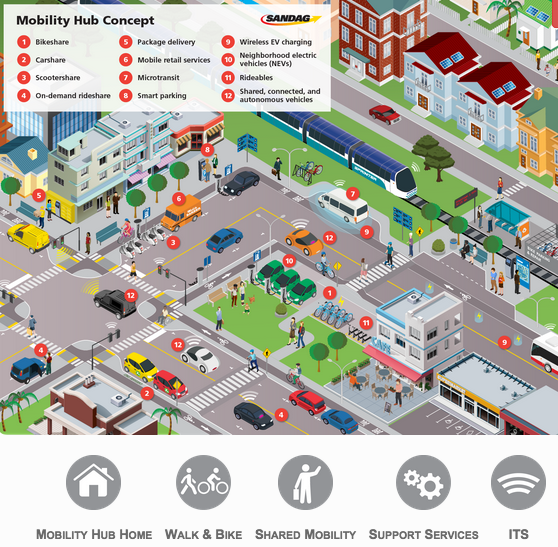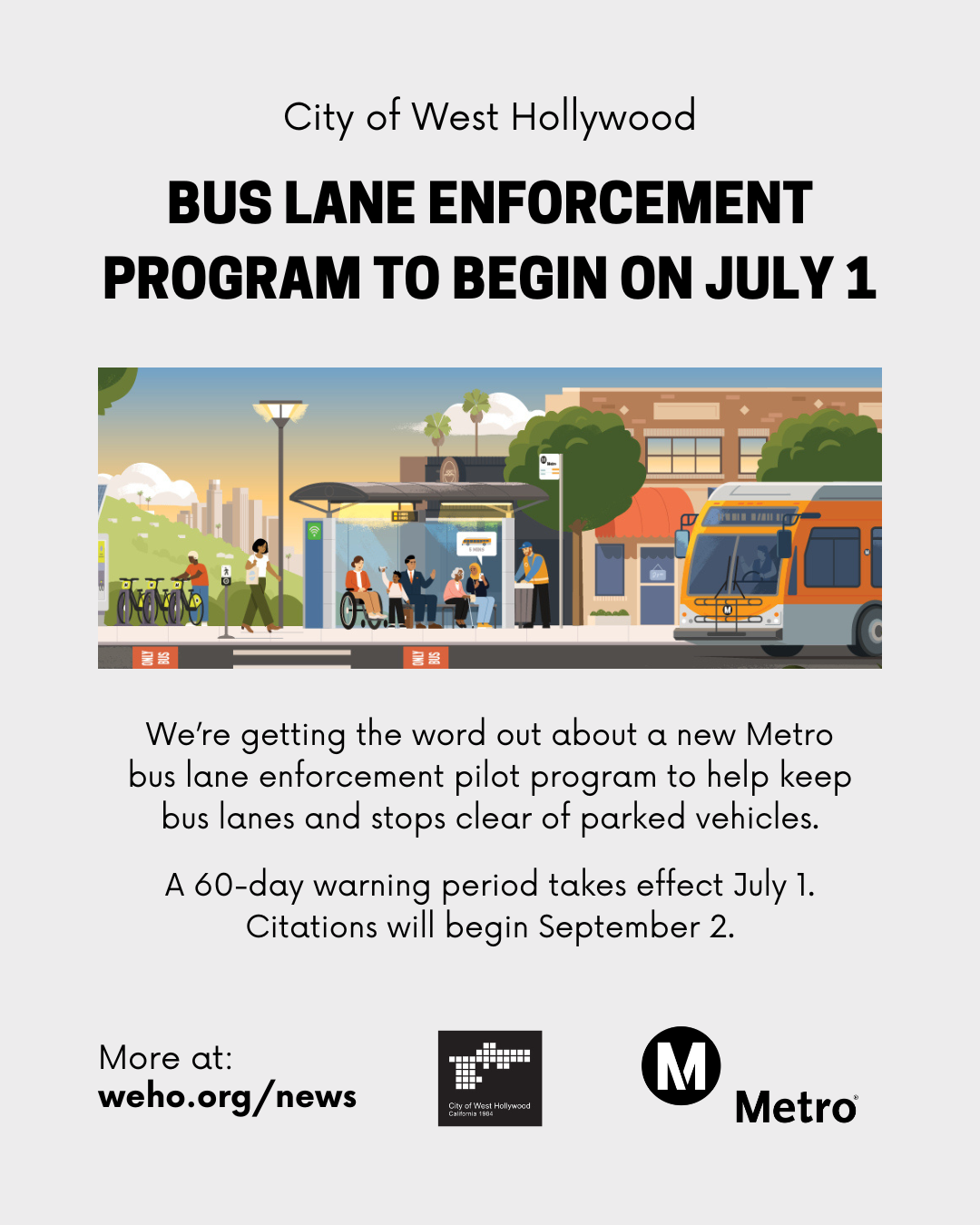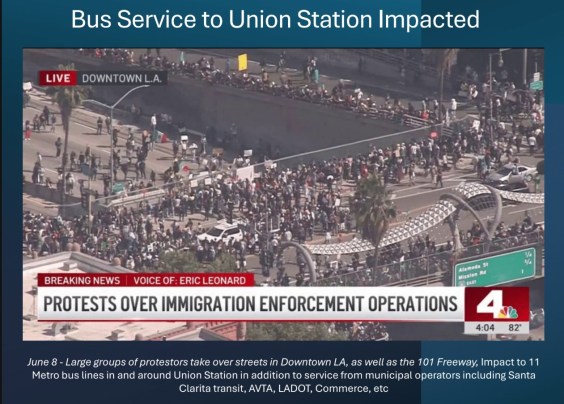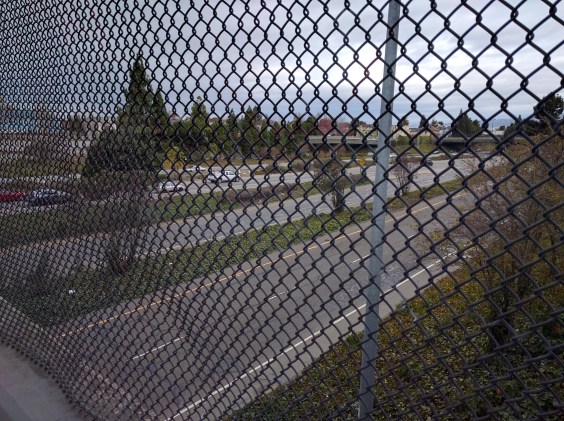Note: GJEL Accident Attorneys regularly sponsors coverage on Streetsblog San Francisco and Streetsblog California. Unless noted in the story, GJEL Accident Attorneys is not consulted for the content or editorial direction of the sponsored content.
Note: this post has been updated to fix an error in SANDAG's greenhouse gas emission reduction goals.
The San Diego Association of Governments (SANDAG) voted Friday on a budget amendment that is a first baby step towards its vision of a transit- and environmentally friendly and efficient transportation system.
However, they ignored the recommendations of their staff and approved an amendment to the amendment that allows them to invest money in planning for several highway widenings. Those projects have no funding to go forward, and the appetite for investing in capacity-increasing projects is diminishing.
When SANDAG executive director Hasan Ikhrata warned the board that their amendment "will put the plan in legal jeopardy," most of them ignored him and voted for it anyway.
The staff recommendation was that they approve funding to begin work on a number of projects, including improvements to the coastal railway, stabilizing bluffs along the coast, beginning planning for a central mobility hub connecting the airport to rail, planning a regional bikeway, and others.
Board Chair Steve Vaus and Escondido Mayor Paul McNamara floated an amendment to scrap one of the staff-recommended projects, the conversion of new HOV lanes on I-5 to toll/express lanes. Instead, they proposed using $90 million for preliminary plans to widen three highways in rural areas of the region: new lanes on the Highway 67, which goes out to unincorporated areas to the east, new HOV lanes on Highway 78, and new express lane connections between I-5 and 78.
Some of the SANDAG board members insisted that these projects had been promised to voters long ago, that they had a duty to spend money from the local sales tax initiative on roads, and that these projects are necessary to alleviate congestion.
SANDAG is struggling to regain public trust after a series of bad moves, including its misrepresentation of how much money a local sales tax initiative would bring in and how many projects the ballot initiative could build. SANDAG greatly oversold what the new tax revenue could do. Its executive director retired under that cloud in 2017, in the midst of the process of creating the Regional Transportation Plan. Hasan Ikhrata, the director of the Southern California Association of Governments, was brought on to replace him more than a year later, after a long and contentious search.
The first thing Ikhrata did was tell the SANDAG board and the public that there was never going to be enough money for all the projects included in the ordinance. He also said all the work that had gone into the RTP was useless, as it would never meet state requirements for lowering emissions. By that point San Diego had already gone through several lawsuits over these kinds of inadequacies in its plans.
Ikhrata suggested scrapping the RTP and starting over. The board agreed, even though that would require legislation. A.B. 1730, the bill extending their deadline to complete the RTP, is currently on the governor's desk.
The board also agreed to pursue a goal of reducing emissions by 19 percent by 2035, as called for by state policies including S.B. 375.
SANDAG staff then produced a vision for the region to aim for, which they are calling "Five Big Moves."
The details are still being worked out, but the idea is to focus on:
- Major investments in improving transit service and connections
- Complete corridors, including technological advances for smoothing congestion as well as safety accommodating transit, bike, pedestrian, and vehicle movement.
- Flexible fleets, including bikes, scooters, shared electric and autonomous vehicles
- Technological upgrades to the operating systems, including signal synchronization
- Creating a Mobility Hub to connect major transit services with a grand central terminal near the airport
Friday's vote was the first test of whether the SANDAG board is ready to support this vision and acknowledge the need to encourage alternatives to driving in order to reduce emissions.
Some of them, at least, seem to have failed on that score. Despite most of the public comments being in favor of the staff recommendation, the board's comments made it clear that they believe they must continue building roads and facilitating vehicle traffic.
Several were skeptical of the notion that transit could help make the city better, saying transit advocates were "pushing Utopian ideas." County supervisor and boardmember Kristin Gaspar gave an impassioned speech in defense of building new lanes, saying a new, wider Highway 67 was promised long ago and that it was needed to "fix congestion."
"How many hours do we have to spend in our commute?" she asked, adding that the rural highway is a "death trap. "We're not building new freeways," she said, "we're trying to save lives."
McNamara dismissed Ikhrata's warning about potential legal repercussions as a "scare tactic without basis in fact."
"You say there could be legal ramifications," he said, "but I would have liked to see a report on that." Staff had addressed some of the consequences in their report for this meeting [PDF], but the board-proposed amendment was new and complex enough that they hadn't been able to dive deeply into the matter.
Some of the potential legal ramifications could result from very recent threats by the federal EPA to hold back highway funding if regional plans are not in compliance with the federal Clean Air Act.
There is also the new Executive Order from Governor Newsom directing CalSTA to focus state transportation funding on ways to lower emissions and driving. San Diego has ignored executive orders in the past, to its detriment.
"It is my job to tell you that if this region falls out of compliance, we are all going to pay the price," Ikhrata told the board. "This is not a scientific way to say it, but we know the laws, we know compliance with the laws. You have to trust your staff."
Aside from the legal questions, there is also the question of wasting money. The amendment only calls for allocating funds to plan the highway widenings; there is no guarantee that there will actually be any money forthcoming, from any source, to build them. Spending $30 million on an EIR could simply be an exercise in throwing away money, something that wouldn't be in anyone's interest, least of all the elected leaders making up SANDAG's board.






